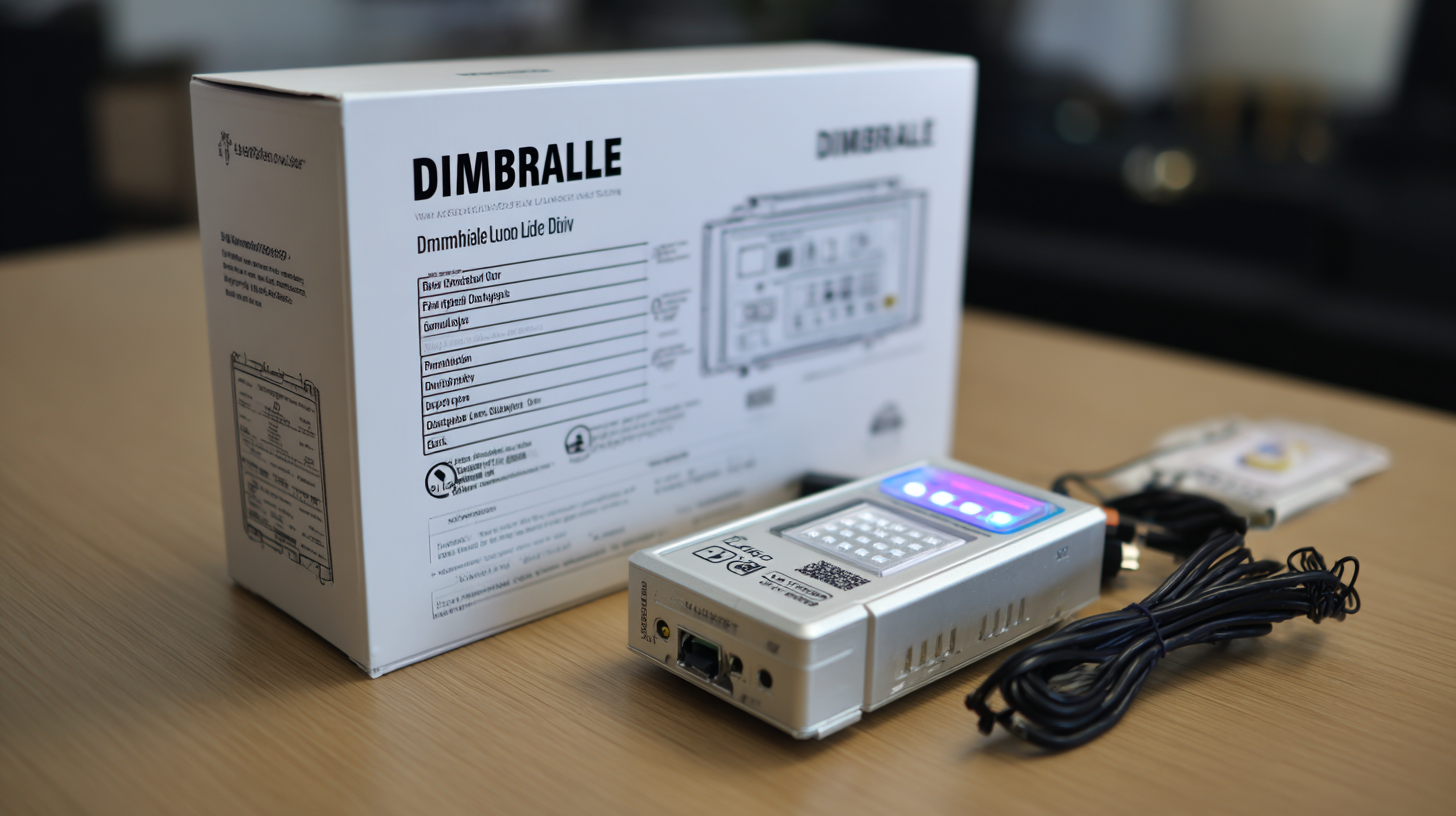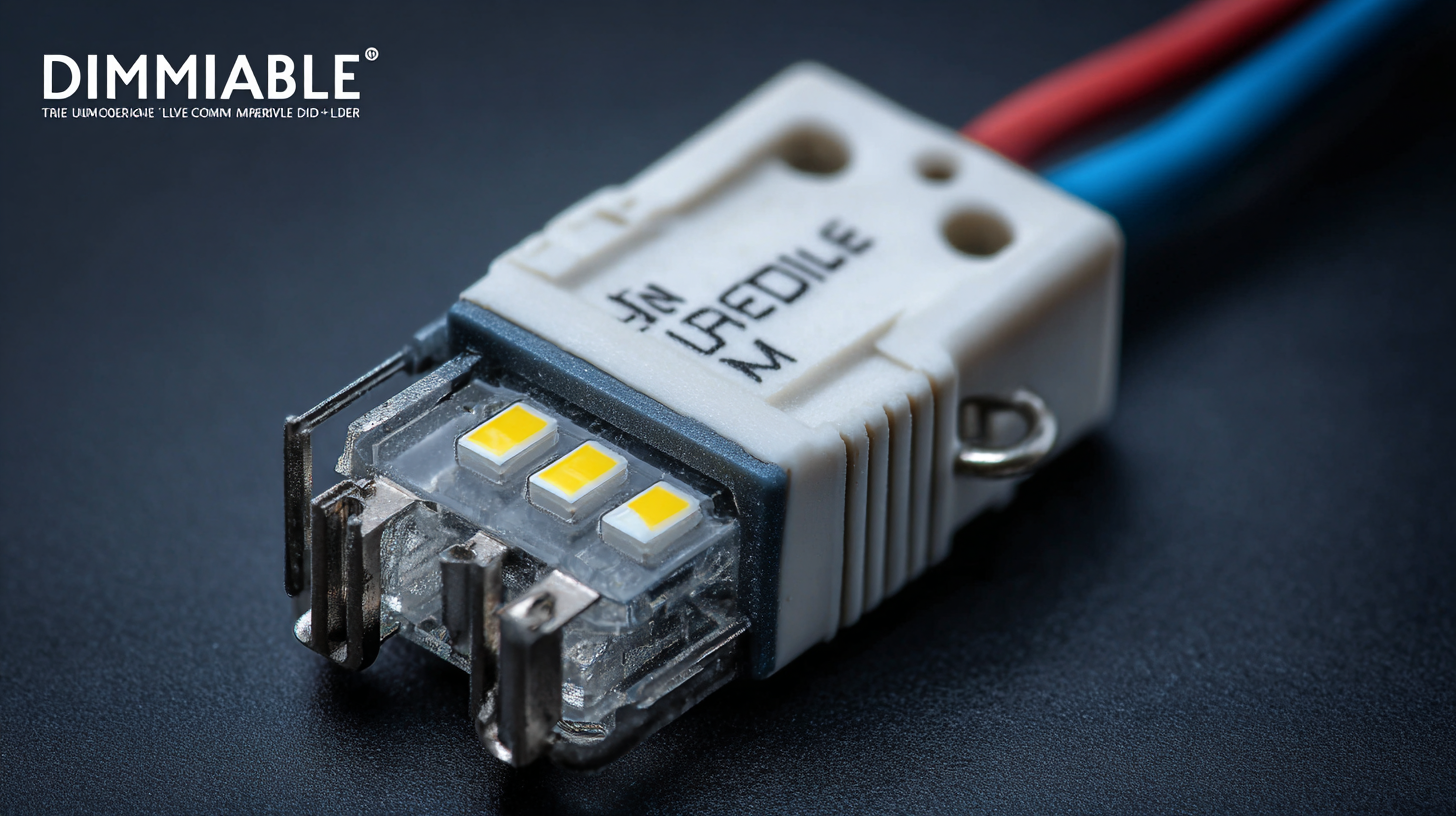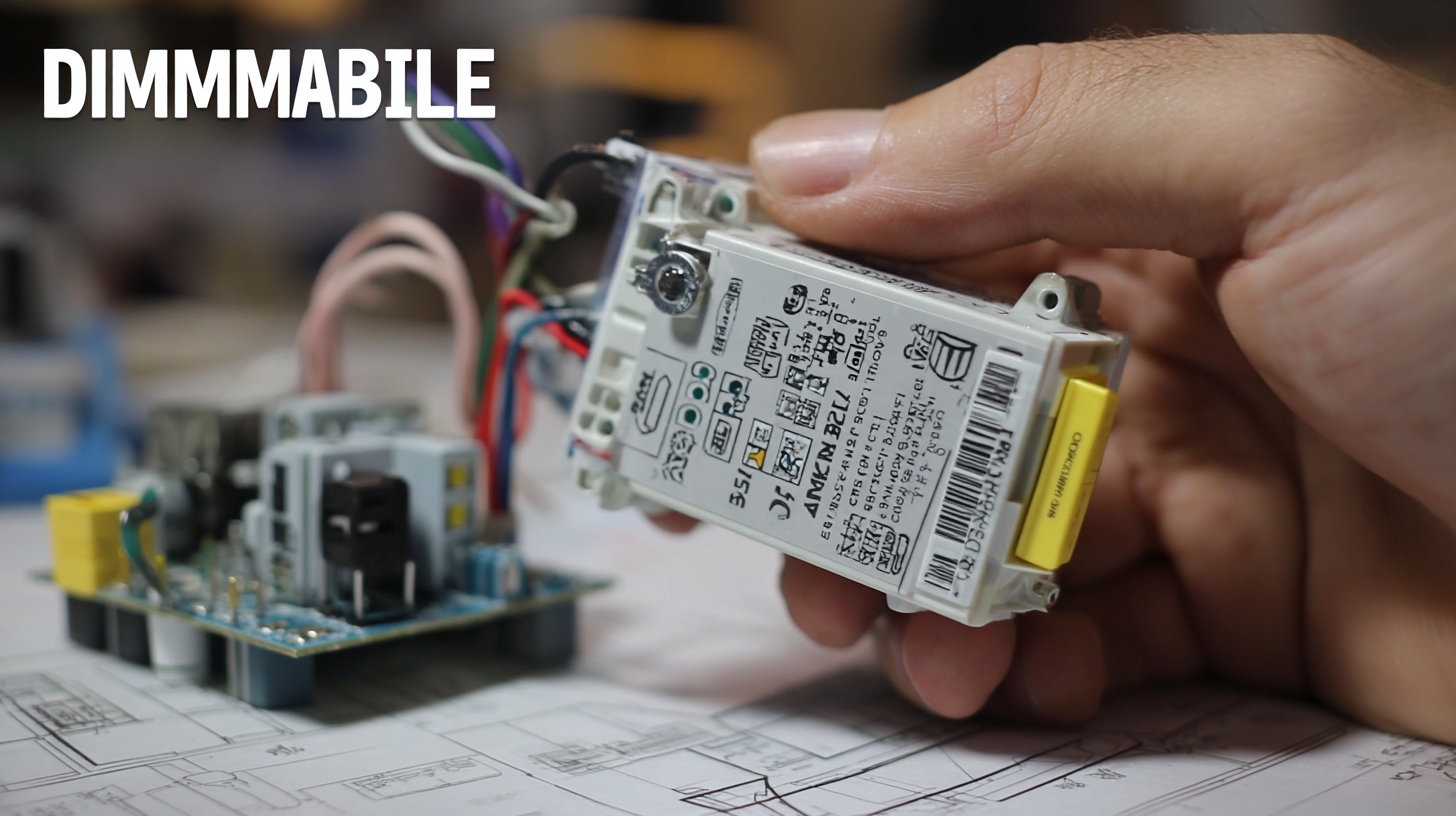Understanding the Challenges of Selecting the Best Dimmable Led Driver for Your Needs
In today’s rapidly evolving lighting industry, the demand for energy-efficient and customizable solutions has led to the increasing popularity of Dimmable LED Drivers. These drivers not only enhance the versatility of LED lighting but also provide consumers with the ability to control brightness levels, ultimately contributing to energy savings and mood enhancement. However, selecting the right Dimmable LED Driver can be a daunting task, faced with a multitude of options and specifications. This complexity is compounded by the necessity of understanding the technical nuances and compatibility with existing lighting systems. As we delve into the challenges of selecting the best Dimmable LED Driver for your needs, we will explore factors such as performance, reliability, and the ever-important aspect of global manufacturing excellence, proudly exemplified by the achievements of Chinese manufacturers catering to international markets.

Factors to Consider When Choosing a Dimmable LED Driver
When selecting a dimmable LED driver, several key factors must be taken into account to ensure compatibility and optimal performance. Firstly, understanding the power requirements of your LED lights is crucial. This includes assessing both the total wattage and the voltage specifications, as mismatched values can lead to inefficient operation or damage to your lighting system. It's also essential to consider the dimming technology that best suits your application, whether it's phase-cut, 0-10V, or digital dimming. Each of these technologies has distinct advantages depending on the control system and desired dimming range.
Another important factor is the driver’s dimming range and flicker performance. A high-quality dimmable LED driver should provide a smooth dimming experience without perceptible flicker, which can cause eye strain or discomfort. Moreover, environmental considerations, such as heat dissipation and thermal management, should not be overlooked. Selecting a driver with excellent thermal performance will ensure longevity and reliability, particularly in applications subject to varying ambient temperatures. By carefully weighing these factors, you can find a dimmable LED driver that meets your specific needs and enhances your lighting experience.
Understanding the Challenges of Selecting the Best Dimmable LED Driver
This chart illustrates the key factors to consider when choosing a dimmable LED driver, including compatibility, efficiency, dimming range, and price. Each factor's importance is assessed on a scale from 1 to 10.
Understanding Different Types of Dimmable LED Drivers
When selecting a dimmable LED driver, understanding the different types available is crucial for achieving optimal performance tailored to your lighting needs. The most common types of dimmable LED drivers include triac, 0-10V, and DALI drivers. Triac drivers are often favored for their compatibility with traditional dimmer switches, allowing for easy retrofitting in residential settings. They operate by adjusting the phase of the electrical signal, offering a smooth dimming experience but may have limitations in terms of flickering and compatibility with various LED fixtures.
On the other hand, 0-10V drivers provide more versatility, allowing seamless integration with advanced dimming systems commonly used in commercial installations. These drivers modify the output voltage to control the brightness, ensuring a flicker-free experience at lower light levels. DALI (Digital Addressable Lighting Interface) drivers represent the cutting-edge approach, enabling digital communication between the driver and lighting fixtures, making them highly suitable for sophisticated lighting designs where precise control and programmability are desired. Understanding these types will empower you to make an informed decision, ensuring that your dimming solution meets both aesthetic and functional demands effectively.

Key Specifications to Look for in a Dimmable LED Driver
When selecting a dimmable LED driver, understanding key specifications is crucial to meet both performance and energy efficiency needs. One primary specification to evaluate is the driver’s output voltage range. Most LED drivers operate within a range of 12V to 48V, but knowing the exact voltage requirements of your LEDs ensures compatibility. According to the latest report by the LED Lighting Research Center, mismatched voltages can lead to reduced performance and a shorter lifespan for LED fixtures.
Another important factor is the dimming range offered by the driver. Ideally, a quality dimmable LED driver should provide a smooth dimming experience without flicker, typically achieving a range from 1% to 100% brightness. Research published by the International Energy Agency (IEA) highlights that drivers with better dimming capabilities not only enhance energy savings but also contribute significantly to overall user satisfaction in lighting design. Additionally, consider the control methods supported by the driver, such as 0-10V, TRIAC, or DALI, as these will impact the system’s versatility and integration into existing lighting setups. Understanding these specifications will guide you in selecting a driver that not only fulfills your current needs but also adapts to future advancements in LED technology.
Understanding the Challenges of Selecting the Best Dimmable Led Driver for Your Needs - Key Specifications to Look for in a Dimmable LED Driver
| Specification | Description | Importance |
|---|---|---|
| Wattage | The maximum power the LED driver can handle, usually measured in watts. | Determines the compatibility with the LED fixtures. |
| Input Voltage | The range of input voltage the driver can accept, typically between 100-240V AC. | Ensures compatibility with available power sources. |
| Dimming Type | The method of dimming supported (e.g., TRIAC, 0-10V, PWM). | Affects control options and user experience in dimming. |
| Efficiency | Percentage of input power converted into usable output power. | Higher efficiency reduces operating costs and heat generation. |
| Load Regulation | Ability of the driver to maintain constant output under varying loads. | Ensures consistent brightness regardless of load changes. |
| Operating Temperature | The ambient temperature range in which the driver operates effectively. | Important for safety and longevity of the device. |
| Form Factor | Physical dimensions and design of the driver. | Must fit into the installation space without issues. |
| Safety Certifications | Compliance with industry standards (e.g., UL, CE, RoHS). | Ensures reliability and safety during operation. |
Common Mistakes to Avoid When Selecting a Dimmable LED Driver
When selecting a dimmable LED driver, many users make common mistakes that can hinder their lighting experience. One of the most significant errors is overlooking the importance of circuit protection components. LED lighting systems, while energy-efficient, require careful consideration of elements such as fuses, metal oxide varistors (MOVs), and transient voltage suppression (TVS) diodes. These components protect against voltage spikes and ensure the longevity and reliability of the lighting system.
Another common pitfall is underestimating the compatibility of the driver with specific LED fixtures. Not all dimmers work effectively with all LED setups, which can lead to flickering or reduced functionality. Ensuring that the dimmable driver matches the specifications of the LEDs being used is crucial for optimal performance. Always consult product specifications and seek expert advice when in doubt to avoid costly mistakes and ensure a successful installation.
Expert Tips for Maximizing Efficiency with Dimmable LED Drivers
Choosing the right dimmable LED driver can significantly enhance both efficiency and performance in your lighting setup. As the Energy Saving Trust highlights, the shift from traditional bulbs to energy-efficient alternatives can save households up to £100 annually. However, to maximize these savings, it’s vital to select the appropriate dimmable LED driver that matches your specific lighting needs.
To ensure efficiency, consider these expert tips: First, assess your setup to determine the total wattage required for your lights. Many dimmable LED drivers have wattage ranges, and selecting one that comfortably accommodates your needs can prevent overloading and extend its lifespan. Second, look for drivers with higher efficiency ratings. According to recent industry data, drivers with efficiencies above 85% not only reduce energy consumption but also minimize heat output, thereby increasing the overall lifespan of your LED lights.
Lastly, make sure to match the driver with compatible dimmers. Incompatible dimmers can lead to flickering and reduced efficiency. By following these tips, you can optimize your dimmable LED setup, achieving both cost savings and extended product lifetimes.

